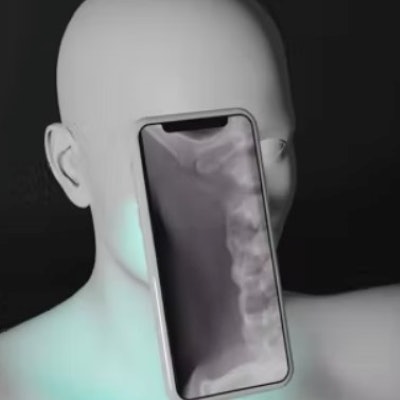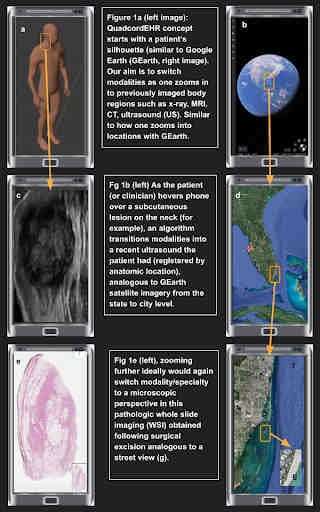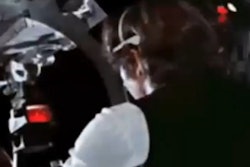
Functioning like the legendary “tricorder” on Star Trek, a smartphone could enable patients to more intuitively access their imaging studies, according to a presentation at the annual Society for Imaging Informatics in Medicine (SIIM) meeting.
Inspired by the tricorder concept as well as by Google Earth, researchers from the University of South Florida and Moffitt Cancer Center are developing QuadcordEHR, an application that's designed to serve as an interactive enterprise imaging patient portal for patients and/or clinicians. In the future, it could even enable the smartphone to be "waved" over anatomic regions -- just like a tricorder -- to display a patient's imaging results.
At SIIM 2022, Lucas Folio, an engineering student at the University of South Florida, demonstrated how this interactive electronic health record currently features a patient's 3D avatar, produced via 3D photogrammetry technology. Using this avatar, patients and/or clinicians could click on anatomic regions to access their prior imaging studies, analogous to Google Earth's Street View feature. He also showed a conceptual animation of how QuadcordEHR could be extended in the future.
Folio is teaming up on the project with his father, Dr. Les Folio, senior member, radiology, at Moffitt Cancer Center, and Dr. Marilyn Bui, senior member, pathology, at Moffitt.
Although patient health records are required by law to be made accessible to patients as soon as they are available, medical records have traditionally been designed for consumption by trained medical professionals. However, patients are the drivers of their own medical journey, and it's important to engage and empower them, according to Folio.
"Only when the patients have a better understanding of their diseases will they be able to work with the healthcare team to deliver better results," Folio said. "The new tool we are developing will bridge this gap and deliver easy-to-understand reporting to the consumers, who are most likely lay people."
The three elements of the tricorder are sensing, recording, and computing, Folio said. With QuadcordEHR, the group proposes to combine enterprise imaging access along with interactive multimedia reporting as the fourth capability.
 Examples of QuadcordEHR concepts. All images and video courtesy of Lucas Folio and Dr. Les Folio.
Examples of QuadcordEHR concepts. All images and video courtesy of Lucas Folio and Dr. Les Folio.For now, the patient's 3D avatar would serve as a launchpad for access to imaging studies, displaying locations on the body that have had prior exams.
"This is possible today," Folio said.
The researchers hope to eventually be able to wave a phone or tablet over a patient's body and view prior imaging studies -- including for example, visual light, radiology, and dermatopathology images -- depending on the anatomic region and spatial orientation of the body relative to a common anatomical reference point.
"Thanks to technological developments in the military for ballistic analysis using anatomic reference points and Cartesian positioning, we are hoping the same localization techniques may allow a phone to know positions when moved away from established reference points," Folio said.
Folio has submitted a patent application for the QuadcordEHR technology.




















